Creating an engaging product environment: How POP displays can enhance the consumer connection
by carly_mchugh | 31 March 2023 10:49 am
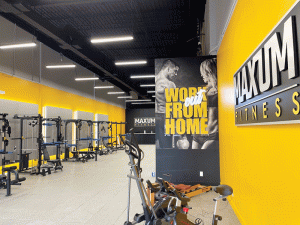 [1]
[1]By Jay Dover
The retail landscape is always evolving, and we are in some exciting times when it comes to showcasing brands and their products. In the post-COVID era, retailers and manufacturers have continued to pursue many creative ideas that came to fruition from the inability to connect in a physical space. With the adoption of growing technology, and the blending of online and offline experiences, the opportunity for in-person connection is narrowing. As such, brands are compelled to make a lasting impression at first sight.
Whether it is making statements with experiential events and pop-up shops or designing mixed-use spaces that connote a lifestyle associated with a brand, the lines have begun to blur when it comes to defining retail. Even large, big-box retailers are experimenting with these small-store market concepts.
With all of this competing messaging vying for consumer attention, one important question comes to mind. How do brands stand apart from the crowd in a more traditional retail environment?
It is a real challenge for manufacturers and brand owners to convey product and brand experience, while ensuring their voice is louder than their competitors.
By using point-of-purchase (POP) and display fixtures to create micro-environments, brands can go beyond their packaging to create a true extension and authentic connection to the product, while sustaining visibility and relevance to the consumer. Defining this type of visual space is one way savvy brands can stand out amongst their competition.
Cannabis retail
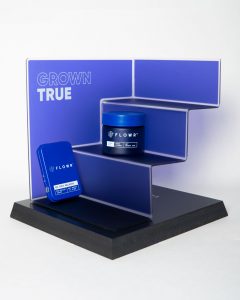 [2]
[2]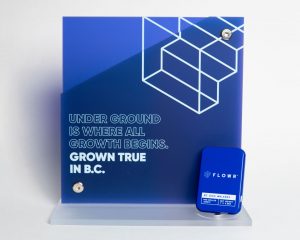
With the legalization of cannabis in Canada, many independent and large-group retailers have begun to pop up across the country. The market is expected to continue its growth in the coming years, as legislation expands.
In the current cannabis retail climate, consumers already have a variety of products to choose from at their local stores. However, for today’s innovators looking to stand apart from the crowd, a thoughtfully designed, well-executed fixture and signage may be the final tipping point in the purchase decision process. Below are two examples of companies DNS Industries (DNS) has worked with to develop cannabis retail fixtures that create a micro-environment which is true to each brand, using simple execution and luxury, tactile finishes.
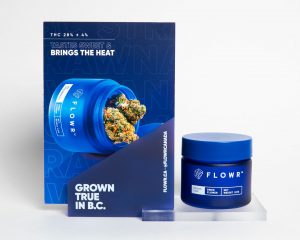
FLOWR
Cannabis company FLOWR, based in Kelowna, B.C., approached us with a solution that could work in any environment, while showcasing its branding and conveying the superior quality of its products.
The company had a very specific vision: a luxury finish with homogenous colour connection to the brand packaging, allowing the product to be a true extension of its holder. Of course, our team was up to the challenge. We worked with FLOWR to refine their existing design and make it production ready.
Fixtures and signage should be an expansion of the larger brand experience. When designing or producing these components, we look to the brand itself to ensure an authentic connection to the product featured in the display. With many players now in the Canadian cannabis market, there is an exciting opportunity for brands looking to differentiate themselves and capture the attention of consumers. The pieces included in this project work well individually, making a maximum impact with a minimum footprint.
To achieve a high-end finish, we used a dual-print process: printing on the second surface to capture the background colour, while allowing the crisp, white text with the brand’s messaging to stand out alongside the product.
A clean-line acrylic was the medium of choice to achieve a clean, high-touch look and feel that works as a stand-alone showcase for the product amongst the many competing cannabis brands.
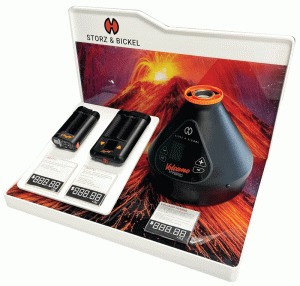 [3]
[3]Storz & Bickel
Storz and Bickel manufactures vaporizer products for customers with more refined taste. As such, it was important to provide an environment that could do justice to the product assortment. For this project, DNS worked with the brand from concept design to build at our in-house facility.
Given the higher retail value of these items, it was important to include security features in the fixture design, while creating a pleasing esthetic that denoted the luxury of the product. We decided to present it on a glass floor tower with built-in lighting, and moreover, a clear environment to highlight the unique nature of this product lineup.
Second, we were challenged with creating a countertop display that could offer the same security as the enclosed tower space. Volcano imagery was printed on polyethylene terephthalate glycol (PETG), and for high impact, we used a gloss acrylic second surface.
The success of this implementation in Canada led to the expansion of this fixture into international retail in both the U.S. and Germany.
Maxum Fitness
We were eager to participate in this project at Maxum Fitness in North York, Ont. It allowed our team to lead the process from concept to completion. We started with the concept of “workout from home,” which was then carried into the brand’s online and offline marketing. The environment blends print, lighting, and the layering of many surface textures and design elements to complete a unified esthetic. We used brushed metal laminate for the wall panels, halo lighting to highlight the equipment, and of course, a feature wall which showcases the key brand messaging to encourage a lifestyle change.
Maxum Fitness is an example of the drive for experience that connects with the brand messaging. The ultimate goal for this project was to create a sleek environment which allowed the product to shine alongside the brand.
Conclusion
Looking ahead into 2023, many new opportunities will arise in the retail fixture and POP sphere. With the development of brands and spaces in the post-COVID era, the continuation of technology connecting the customer to the brand journey before and after purchase, and the ongoing evolution of the retail environment, DNS is poised to support them all.
A general manager at DNS Industries, Jay Dover is a retail environment professional with more than 40 years of experience in bringing clients’ visions to fruition. Dover is highly experienced in the manufacturing of POP displays, retail environments, wayfinding signage, and print production processes.
- [Image]: https://www.signmedia.ca/wp-content/uploads/2023/03/PG24_Image-1-1.gif
- [Image]: https://www.signmedia.ca/wp-content/uploads/2023/03/FLOWR3.jpg
- [Image]: https://www.signmedia.ca/wp-content/uploads/2023/03/PG24_SB_counter-copy-1.gif
Source URL: https://www.signmedia.ca/creating-an-engaging-product-environment/